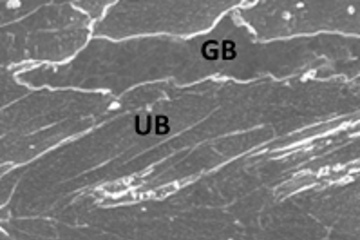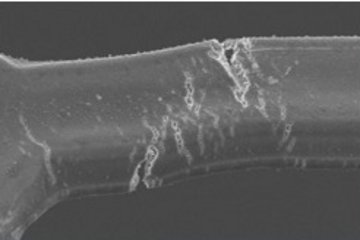All genres
401.
Talk
The role of defects in Nb3O7(OH) and TiO2 nanoarrays. Energy Materials Nanotechnology (EMN), Dubrovnik, Croatia (2016)
402.
Talk
Are Mo2BC nanocrystalline coatings damage resistant? Insights from comperative tension experiments. 62. Metallkunde-Kolloquium, Werkstoffforschung für Wirtschaft und Gesellschaft , Lech am Arlberg, Austria (2016)
403.
Talk
Insights into degradation processes in WO3-x based anodes of HT-PEMFCs via electron microscopic techniques. Fuel Cells Science and Technology 2016 , Glasgow, Scotland, UK (2016)
404.
Talk
Defects in as-grown vs. annealed rutile titania nanowires and their effect on properties. EMC 2016, 16th European Microscopy Congress, Lyon, France (2016)
405.
Talk
Template-free synthesized high surface area 3D networks of Pt on WO3-x – a promising alternative for H2 oxidation in fuel cell application. 2016 MRS Fall Meeting, Boston, MA, USA (2016)
406.
Talk
Investigation of solid state dewetting phenomena of epitaxial Al thin films on sapphire using electron microscopy. The 16th European Microscopy Congress (EMC 2016), Lyon, France (2016)
407.
Talk
Solid state dewetting of epitaxial Al thin films on sapphire studied by electron microscopy. Materials Research Society Fall Meeting & Exhibition 2016 (MRS Fall 2016), Boston, MA, USA (2016)
408.
Talk
New insights into HTPEM fuel cells using electron microscopy techniques. THERMEC’2016: 9th International Conference on Processing & Manufacturing of Advanced Materials, Graz, Austria (2016)
409.
Talk
Atomic arrangement and defects in Nb3O7(OH) and TiO2 nanoarrays and their effect on functional properties. Talk at Institut für Anorganische und Analytische Chemie, Universität Freiburg, Freiburg, Germany (2016)
410.
Talk
Dewetting of epitaxial Al thin films on (0001) single crystalline sapphire substrates. Materials Science & Technology (MS&T), Columbus, OH, USA (2015)
411.
Talk
Electron microscopic investigation of hydrothermally grown rutile nanowires. Microscopy Conference MC 2015, Göttingen, Germany (2015)
412.
Talk
Challenges in nanostructured photovoltaic devices. IAMNano 2015 - International Workshop on Advanced and In‐situ Microscopies of Functional Nanomaterials and Devices, Hamburg, Germany (2015)
413.
Talk
Electron microscopic studies on TiO2/CuInS2 hetero-nanostructures. SCANDEM, Jyväskylä, Finland (2015)
414.
Talk
Electron microscopic insights into degradation processes in high temperature polymer electrolyte membrane fuel cells. Scandem 2015, Jyväskylä, Finland (2015)
415.
Talk
Temperature induced faceted hole formation in epitaxial Al thin films on sapphire. Understanding Grain Boundary Migration: Theory Meets Experiment, Günzburg/Donau, Germany (2015)
416.
Talk
Structural and Functional Properties of Nb3O7(OH) and TiO2 Nanoarrays. Max Planck POSTECH/KOREA Symposium on Frontiers in Materials Science, Pohang, Korea (2015)
417.
Talk
Detailed electron microscopy study on the structural transformation inside rutile TiO2 nanowires upon annealing. 2nd International Workshop on TEM Spectroscopy in Material Science, Uppsala, Sweden (2015)
418.
Talk
Dewetting of Al films on alumina. 3 Phase, Interface, Component Systems (PICS), Centre Interdisciplinaire de Nanoscience de Marseille (CINaM), Marseille, France (2015)
419.
Talk
Low-cost synthesis of semiconducting nanostructures used in energy applications. 61. Metallkunde-Kolloquium - Werkstoffforschung für Wirtschaft und Gesellschaft, Lech am Arlberg, Austria (2015)
420.
Talk
Optimization and Characterization of Nanostructured Materials used in Energy Generating Devices. Talk at Institut für Metallkunde und Metallphysik RWTH Aachen University, Aachen, Germany (2015)











